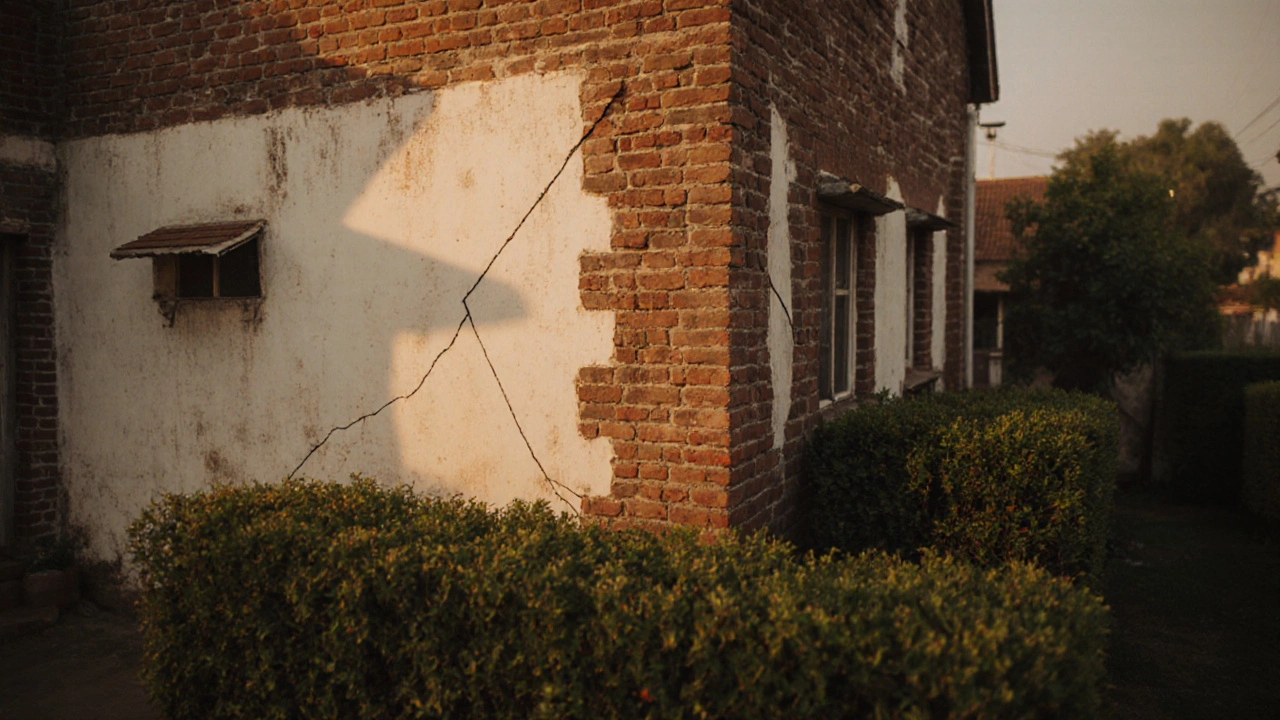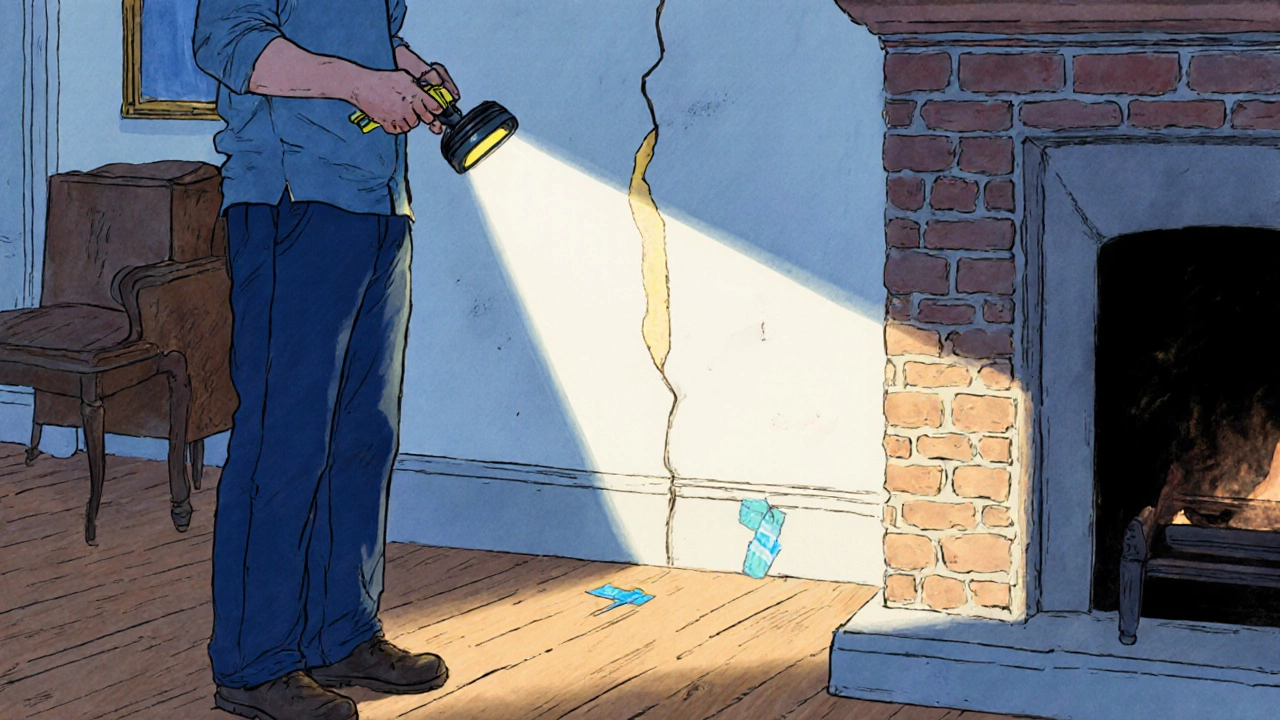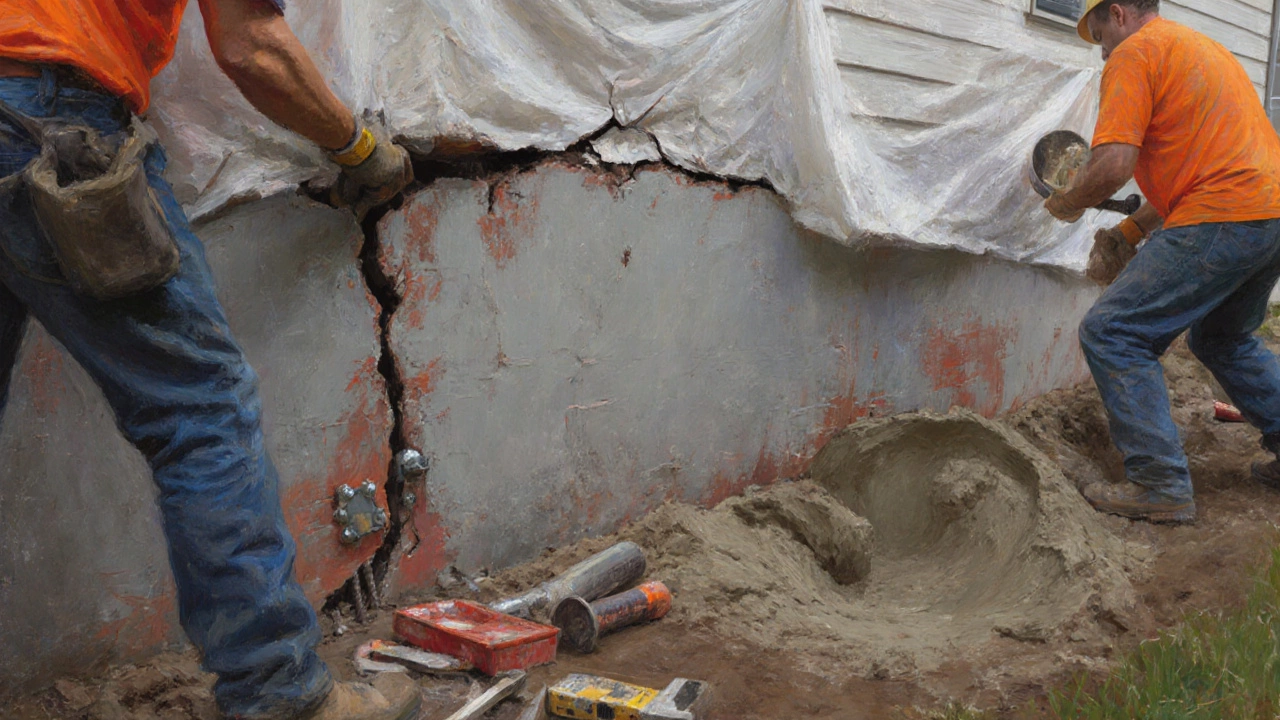Are Cracks Normal in a 100‑Year‑Old House? What to Look For

Crack Severity Checker for Historic Homes
Crack Analysis Results
| Crack Appearance | Likely Cause | Severity (1-5) |
|---|---|---|
| Thin hairline lines on plaster or drywall | Normal settling or temperature changes | 1 |
| Diagonal cracks in brickwork, < 3 mm wide | Moisture expansion or minor foundation movement | 2 |
| Vertical cracks running the full height of a wall, > 5 mm | Significant foundation shift or overloaded load-bearing wall | 4 |
| Horizontal cracks near the base of a wall | Pressure from expanding soil (hydrostatic) or severe settlement | 5 |
| Stair-step cracks in mortar joints | Movement in brick units, often due to foundation issues | 3 |
Living in a house that’s stood for a century can feel like owning a piece of history - until you spot a line popping up on the plaster or brick. You wonder, is it normal for a 100 year old house to have cracks?
Below you’ll find a practical guide that tells you why those cracks appear, which ones demand urgent action, and how to inspect and repair them without turning your home into a disaster zone.
Why do cracks appear in century‑old homes?
Old houses have been through decades of weather, settlement, and adaptations. Several forces regularly stress the building envelope:
- Foundation settlement is a primary cause. As soil shrinks, swells, or moves, the footing can shift, pulling walls apart.
- Moisture cycles (rising damp, freeze‑thaw) expand and contract masonry, creating hairline fissures.
- Thermal movement from sun‑heated walls and cold nights produces small shifts in timber and brick.
- Structural alterations such as added extensions, new floor loads, or removed supporting walls can overload original framing.
- Material fatigue - bricks, mortar, and plaster lose elasticity after 100 years, making them more prone to cracking.
Knowing the root cause helps you decide whether the crack is merely cosmetic or a warning sign.
Common crack types and what they usually indicate
The following table groups the most frequently seen cracks, their typical sources, and a quick severity rating (1=cosmetic, 5=potential structural failure).
| Crack Appearance | Likely Cause | Severity (1‑5) |
|---|---|---|
| Thin hairline lines on plaster or drywall | Normal settling or temperature changes | 1 |
| Diagonal cracks in brickwork, < 3mm wide | Moisture expansion or minor foundation movement | 2 |
| Vertical cracks running the full height of a wall, > 5mm | Significant foundation shift or overloaded load‑bearing wall | 4 |
| Horizontal cracks near the base of a wall | Pressure from expanding soil (hydrostatic) or severe settlement | 5 |
| Stair‑step cracks in mortar joints | Movement in brick units, often due to foundation issues | 3 |
Use this guide as a first‑look filter. If a crack falls into the 3‑5 severity band, you should move to a deeper inspection.

When a crack signals a serious problem
Even historic homes can be structurally sound, but certain red flags demand professional attention:
- Cracks that widen by more than 1mm over a few weeks.
- Horizontal cracks at the foundation level - they often indicate lateral pressure.
- Doors or windows that stick or no longer close properly.
- Visible bowing or bulging in walls.
- Crack patterns that intersect or form a ‘X’ shape.
If you spot any of these, call a qualified structural engineer or a reputable foundation repair specialist.
DIY inspection checklist for an old house
Before you dial a pro, walk through the home with this simple list:
- Grab a flashlight and a measuring tape.
- Mark the ends of each crack with a small piece of masking tape.
- Measure width (at widest point) and length.
- Record the direction (vertical, horizontal, diagonal, stair‑step).
- Check for movement: push gently on the wall near the crack. Does it flex?
- Take photos for future comparison and for any professional you may hire.
- Note any accompanying moisture - damp spots, peeling paint, or mold.
Re‑visit the marked cracks after a rainy week and after a dry spell. Noticeable changes often point to moisture‑related issues.
Repair options: DIY versus professional
Repair choice hinges on severity and material:
- Cosmetic hairline cracks - patch with joint compound, sand, and repaint.
- Mortar joint cracks - re‑point using a lime‑based mortar that matches the original composition.
- Structural cracks (severity 4‑5) - require underpinning, wall anchors, or steel reinforcement installed by a qualified contractor.
DIY fixes are fine for non‑load‑bearing walls, but never attempt to “stitch” a load‑bearing brick wall yourself; a botched repair can worsen the problem.

How to pick the right inspector or contractor
Because historic homes have quirks, you need a professional who respects old‑building methods:
- Check for accreditation with the Royal Institution of Chartered Surveyors (RICS) or a similar body.
- Ask for references on previous heritage property projects.
- Insist on a written report that includes crack mapping, cause analysis, and a repair plan with cost estimates.
- Verify insurance coverage for both liability and workmanship.
A thorough report not only tells you what’s wrong but also helps you prioritize budget‑friendly fixes.
Preventing future cracks
Prevention beats repair. Here are a few habits that keep a century‑old house stable:
- Control moisture: Install proper guttering, keep ground grading away from the foundation, and ventilate crawl spaces.
- Maintain the roof: Leaks accelerate timber rot and affect wall stability.
- Mind load changes: Avoid heavy storage on upper floors or adding large appliances without checking floor joist capacity.
- Temperature moderation: Use interior humidity control (dehumidifiers) during extreme weather to reduce expansion‑contraction cycles.
Regularly revisiting the DIY checklist-especially after harsh winters or heavy rain-keeps you ahead of any emerging issues.
Frequently Asked Questions
Do all old houses develop cracks?
Most houses older than 80years will show at least a few minor cracks due to normal settling and material fatigue. The key is whether those cracks are stable and superficial or indicative of movement.
How fast can a serious crack grow?
In aggressive soil movement or water ingress scenarios, a crack can widen several millimetres in days. Monitoring using a crack monitor or simple pencil marks daily can catch rapid growth early.
Is re‑pointing mortar enough for historic brick walls?
If the bricks themselves are sound, re‑pointing with a lime‑based mortar restores flexibility and breathability, which is ideal for heritage structures. However, if bricks are spalling, you’ll need brick replacement that matches the original size and colour.
Can I use epoxy fillers for structural cracks?
Epoxy can seal small, non‑load‑bearing cracks, but it does not address the underlying movement. For structural cracks, reinforcement or underpinning is required before any filler is applied.
How much does a professional inspection cost?
In the UK, a detailed structural survey for a 100‑year‑old property typically ranges from £350 to £600, depending on size and complexity. It’s a worthwhile investment compared with the cost of unforeseen repairs.
Write a comment